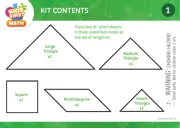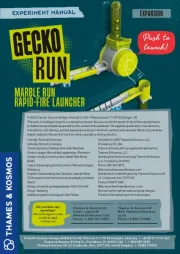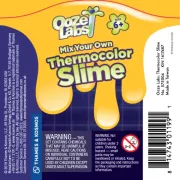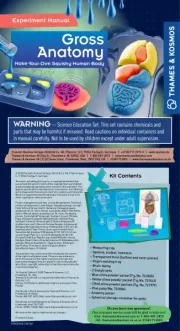Thames & Kosmos Dohdles! Handleiding
Thames & Kosmos
Niet gecategoriseerd
Dohdles!
Bekijk gratis de handleiding van Thames & Kosmos Dohdles! (4 pagina’s), behorend tot de categorie Niet gecategoriseerd. Deze gids werd als nuttig beoordeeld door 4 mensen en kreeg gemiddeld 4.4 sterren uit 2.5 reviews. Heb je een vraag over Thames & Kosmos Dohdles! of wil je andere gebruikers van dit product iets vragen? Stel een vraag
Pagina 1/4

Klaus Teuber
F
o
r
3
-
6
P
l
a
y
e
r
s
,
A
g
e
s
1
0
Y
e
a
r
s
a
n
d
U
p
!
Game Components
1 Game board
6 Suggestion boards with sample
questions on one side and a list of
Dohdle terms on the other side
1 Guess funnel for sorting guesses (to
be assembled before the rst game,
from ve die-cut cardboard pieces)
1 Pad with 200 solution sheets
1 “Dohdle Master” placard
6 Modeling dough bars in 6 colors
6 Playing tokens in 6 colors
6 Guess cubes in 6 colors
18 Clue chips (in 6 colors, 3 of
each color)
6 Storage bags for the modeling
dough
In addition, each player needs a pen to write down their Dohdle terms.
What’s a Dohdle?
A Dohdle is a riddle sculpted in modeling dough. To create a Dohdle, sculpt
the approximate shape of an object or living thing. You should sculpt the
shape in such a way that your opponents do not immediately recognize
what your Dohdle is supposed to represent. This means that expert
sculpting skills are not required. Even if you’re all thumbs when it comes to
sculpting, you’ll be able to create a Dohdle that has the shape of a sausage,
a ball, or a loaf of bread.
Important: When sculpting your Dohdle, make sure that identifying
the solution to your Dohdle is neither too easy nor too dicult for your
opponents. This is because, as the Dohdle’s creator, you can also score
points when your opponents guess correctly. On page 2 of these game
rules, you can nd hints for sculpting Dohdles. Before starting the rst
game, you should read them aloud to all of the players.
W
h
a
t
i
s
t
h
a
t
?
!
D
O
H
D
L
E
S
!
Game Concept and Game Objective
“Is it a living being?”
“Is it made by humans?”
“Did it exist 200 years ago?”
Questions like these get you closer to guring out what your opponents’
Dohdles represent. But watch out: Everyone is listening!
If your question is too obvious, you help other players along. Then you
have to act fast and be the rst player to toss your guess cube into the
guess funnel. If your proposed solution is correct, you — and potentially
also the creator of the Dohdle — move forward on the scoring track. If your
proposed solution was wrong, you must move backward. As soon as a
player reaches the nal space on the scoring track, p1-he or she wins the
game and becomes the true Dohdle Master!

1
2
5
8
6
7
3
4
9
Assembling the Guess Funnel
Carefully detach all of the parts from the frames and assemble
the guess funnel. It consists of ve individual pieces. First, read
the respective step described in the instructions below. Look at
the part in the corresponding illustration and assemble the part
accordingly.
1
Fold the sidewalls of the box together.
2
Fold the sides of the chute upward.
3
Slide the chute lengthwise — narrow end rst —
from above through the opening in the sidewall.
4
Afterwards, insert the tab located at the wide end
of the chute into the slot in the opposite sidewall.
5
Insert the small, T-shaped piece into the slot in the
tab.
6
Place the cover plate on top of the sidewalls, so
that the protruding edges of the side walls t
through the corresponding triangular openings in
the cover plate.
7
Fold the funnel piece so that its ends meet and hold the ends together.
8
From above, push the funnel piece into the cover plate’s opening until it locks in place.
Important: You must align the funnel piece so that the side
marked with the black “?!” is above the side where the chute
comes out of the box.
9
Now you have nished assembling the guess funnel. You don’t
have to take it apart after play — it can be stored in one piece
in the box tray.
Preparation
• Unfold the game board. Place the in the center of the guess funnel
board.
• Shue the suggestion boards, with the “sample questions” side face up.
Each player draws and places it in front of himself one suggestion board
or herself, with the “sample questions” side up.
• Each player chooses a color and receives his or her modeling dough, a
guess cube, two clue chips (or three chips in a three-player game) and
his or her all in the player’s chosen color.playing token,
• In addition, each player receives two solution sheets (or three sheets in a
three-player game) from the pad.
• Each player places his or her playing token on the starting space
(which has a large white arrow on it) and his or her guess cube
on his or her suggestion board.
• Put the remaining game components back into the box.
• In a four-, ve-, or six-player game, each player sculpts two
Dohdles. In a each player sculpts three-player game, three Dohdles.
During the rst games, you should choose terms from the list on the
back of your suggestion board.
Please note: Each suggestion board contains dierent terms. Experienced
players may come up with more Dohdle terms. You can nd more
information about this at the end of these game rules (page 4).
• Twelve circular Dohdle spaces are arranged around the outer circle of
the game board. Each Dohdle space is surrounded by eight smaller
circles — a and starting space for the clue chip seven clue spaces.
• When a player has nished sculpting their Dohdle, he or she places it
on a free Dohdle space and places one of his or her clue chips on the
starting space (which shows a drawing of a chip). Then the player writes
the secret solution word blank side on the of a solution sheet. The
player slides the solution sheet, word-side down, halfway under the
game board so that the sheet sticks out from underneath the associated
Dohdle space and so that the word is well hidden. The letter spaces,
numbered 1 through 5 for the rst ve letters of the solution word,
are visible. The player repeats this step with his or her second (or third)
Dohdle, setting it up in a Dohdle space adjacent to the rst (or second).
Please note: All 12 Dohdle spaces are used only when there are six players.
With fewer players two, three, or four Dohdle spaces remain unused.
• The oldest player begins. He or she receives the “Dohdle Master” placard.
Hints for Sculpting a Dohdle
If you want to create a Dohdle that represents an animal or a thing, you
should only sculpt the approximate shape of the object. Don’t show too
many details. On the other hand, you shouldn’t omit every detail to a
degree that it becomes impossible to guess what the Dohdle represents.
2
Clue spaces
Dohdle space
Starting space for clue chip
Too easy! The Dohdle can
clearly be recognized as a
amingo or stork.
Too dicult! This could be too
many things.
Just right! With a little bit
of imagination, you can
recognize a sleeping amingo
that is standing on one leg.
Too easy! It’s clearly an insect.
After the rst letter clue, you
will probably know whether
it is supposed to represent an
ant or a bee.
Too dicult! This doesn’t look
like a living being at all.
Just right! One can intuit the
characteristic feature of an
insect body. The legs have
been omitted — they would
make things too easy.
Too easy! You recognize the
Paris landmark immediately.
Too dicult! This could be
quite a lot of things.
Just right! This could also be a
tool, but after a few questions
you’ll be heading in the right
direction.
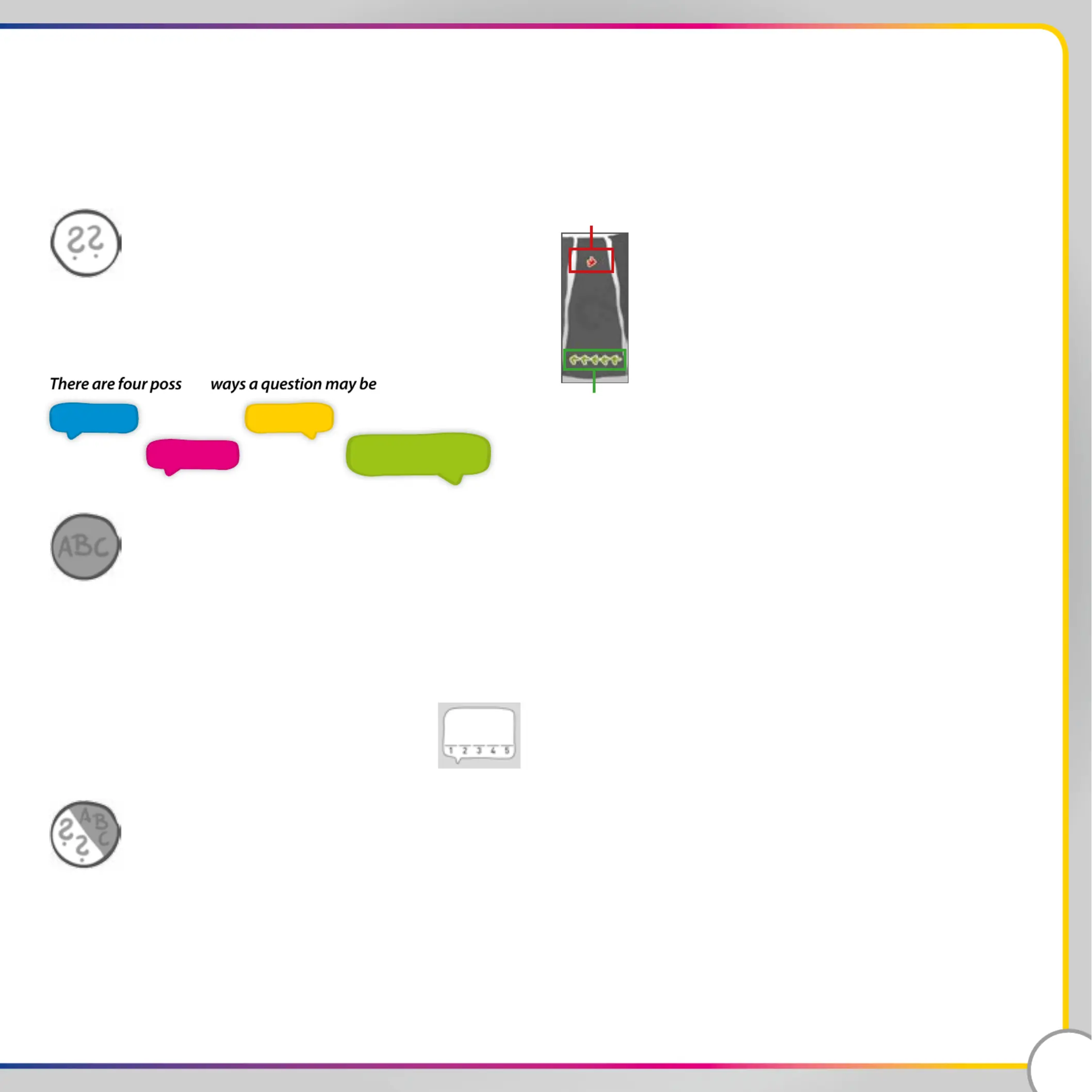
Sequence of Play
Asking for a Clue
When it is your turn, you are the active player and the “Dohdle Master”
placard is placed in front of you. Choose one of the opponents’ Dohdles
and, following the direction of the arrow, move the of this clue chip
Dohdle to the clue space. Depending on the clue space, you then ask next
the creator of this Dohdle for a clue.
White “??” Clue Space:
Ask up to two questions about a Dohdle.
You ask the Dohdle’s creator up to two questions. You may
not inquire about the solution — for example, “Is ‘rabbit’ the
solution word?” Also, you may neither inquire about a letter, for example,
“Is the rst letter ‘E’?” nor about the solution’s total number of letters. The
creator of the Dohdle is not allowed to answer prohibited questions. Some
examples for allowed questions are shown on the suggestion board.
ible answered:
Gray “ABC” Clue Space:
Ask for one letter of the solution word.
You ask the creator of the Dohdle for a letter out specic
of the of the solution to the Dohdle, for rst ve letters
example, “Tell me the second letter.” The creator of the Dohdle rst
announces the letter and then writes it in the corresponding space on the
solution sheet located below this Dohdle. Afterwards, he or she slides
the sheet under the game board again, making sure the board covers only
some of the sheet, so that all players can see the letters on the sheet.
Important: To avoid putting any of the players at a
disadvantage, before writing the letter down the creator of
the Dohdle must rst say the letter loudly and clearly.
White-Gray “??\ABC” Clue Space:
Ask up to two questions or ask for one letter.
On the seventh, white-gray clue space you have the option
of either asking up to two questions or asking for a letter.
Next Player:
Once you have gotten your answers, the next player in a clockwise
direction takes the “Dohdle Master” placard. Now it is his or her turn to
move the clue chip of any of the opponents’ Dohdles forward one clue
space and ask for a clue.
Solving a Dohdle
After a specic Dohdle’s clue chip has been moved away from its starting
space, any of the players may announce at any time that he or she
wants to propose a solution to that Dohdle. This doesn’t have to be the
Dohdle about which someone just asked questions or for a letter clue. To
announce that you want to propose a solution, shout “Dohdles!” and toss
your guess cube into the Afterwards, say your proposed guess funnel.
solution aloud.
• If your proposal is , you must move your wrong playing
token backward. The number of spaces you must go back
corresponds to the number of red arrows depicted on the
space where your playing token stands.
• If your proposal is correct, move your playing token
forward. The number of spaces you move forward
corresponds to the number of green arrows depicted on
the space where your playing token stands.
Important: The proposed word must be to the word on the identical
solution sheet. If, for example, the solution is “turnip,” the proposal “carrot”
is wrong, or if the solution is “moth,” the proposal “buttery” is wrong. The
letters you receive on the gray “ABC” clue spaces help you gure out the
correct word.
If various players shout “Dohdles!” and toss their guess cubes into
the funnel, the order in which the cubes come out of the funnel decides
which player is rst. The fastest player, i.e., the player whose cube was
rst to come out of the funnel, starts. If his or her solution is correct, the
other players can no longer propose their solutions. If his or her solution
is wrong, the other players propose their solutions in the order their guess
cubes came out of the funnel. After the solutions have been proposed, the
guess cubes are returned to their owners.
Important: After shouting “Dohdles!” and tossing your cube into the guess
funnel, you propose a solution. This also applies if a faster opponent must
already said the same word you wanted to propose and that word is
wrong. In this case, you may say a dierent word.
Special Right for the Active Player
For each Dohdle, the time a clue is given the following rule applies: If rst
the player whose turn it is (the active player) has moved the clue chip of a
Dohdle to the rst clue space and at least one opponent has announced
that he or she wants to propose a solution, then the active player receives
the special right to be the rst to propose his or her solution — regardless
of the position his or her guess cube occupies after coming out of the
funnel.
Please note: This prevents the opponents from beating the active player to
proposing the rst solution to a Dohdle before he or she has even asked a
question about this Dohdle.
3
NO
YES
MAYBE
CANNOT BE
ANSWERED CLEARLY
E
INCORRECT
CORRECT
Product specificaties
| Merk: | Thames & Kosmos |
| Categorie: | Niet gecategoriseerd |
| Model: | Dohdles! |
Heb je hulp nodig?
Als je hulp nodig hebt met Thames & Kosmos Dohdles! stel dan hieronder een vraag en andere gebruikers zullen je antwoorden
Handleiding Niet gecategoriseerd Thames & Kosmos
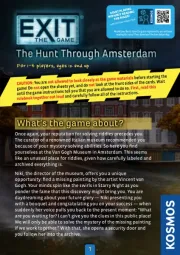
Thames & Kosmos EXIT: The Hunt Through Amsterdam Handleiding
4 Augustus 2025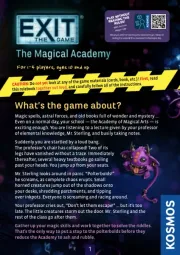
4 Augustus 2025
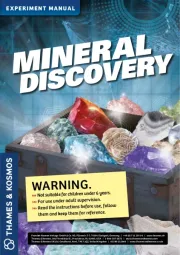
4 Augustus 2025
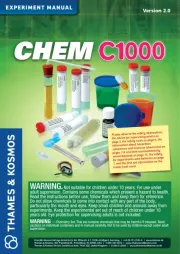
4 Augustus 2025
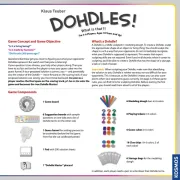
4 Augustus 2025
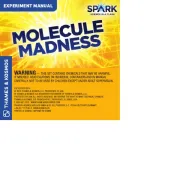
4 Augustus 2025
Handleiding Niet gecategoriseerd
- Aqua Joe
- Revo
- Easy Home
- Proaim
- Stamos
- Hollyland
- Tone City
- Finlux
- Fluidmaster
- Vestil
- Paingone
- Zennio
- Technaxx
- SIGHILL
- Instant
Nieuwste handleidingen voor Niet gecategoriseerd
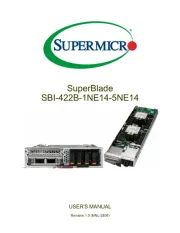
4 Augustus 2025
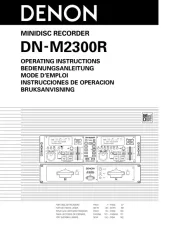
4 Augustus 2025
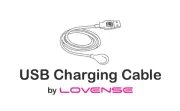
4 Augustus 2025
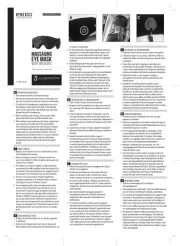
4 Augustus 2025
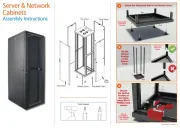
4 Augustus 2025
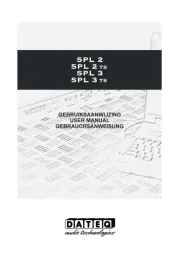
4 Augustus 2025
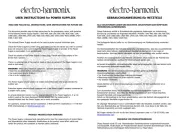
4 Augustus 2025
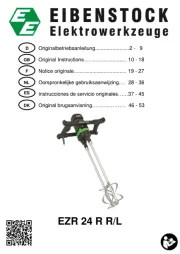
4 Augustus 2025
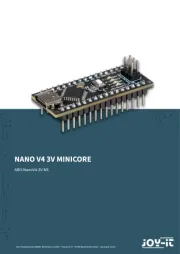
4 Augustus 2025

4 Augustus 2025
